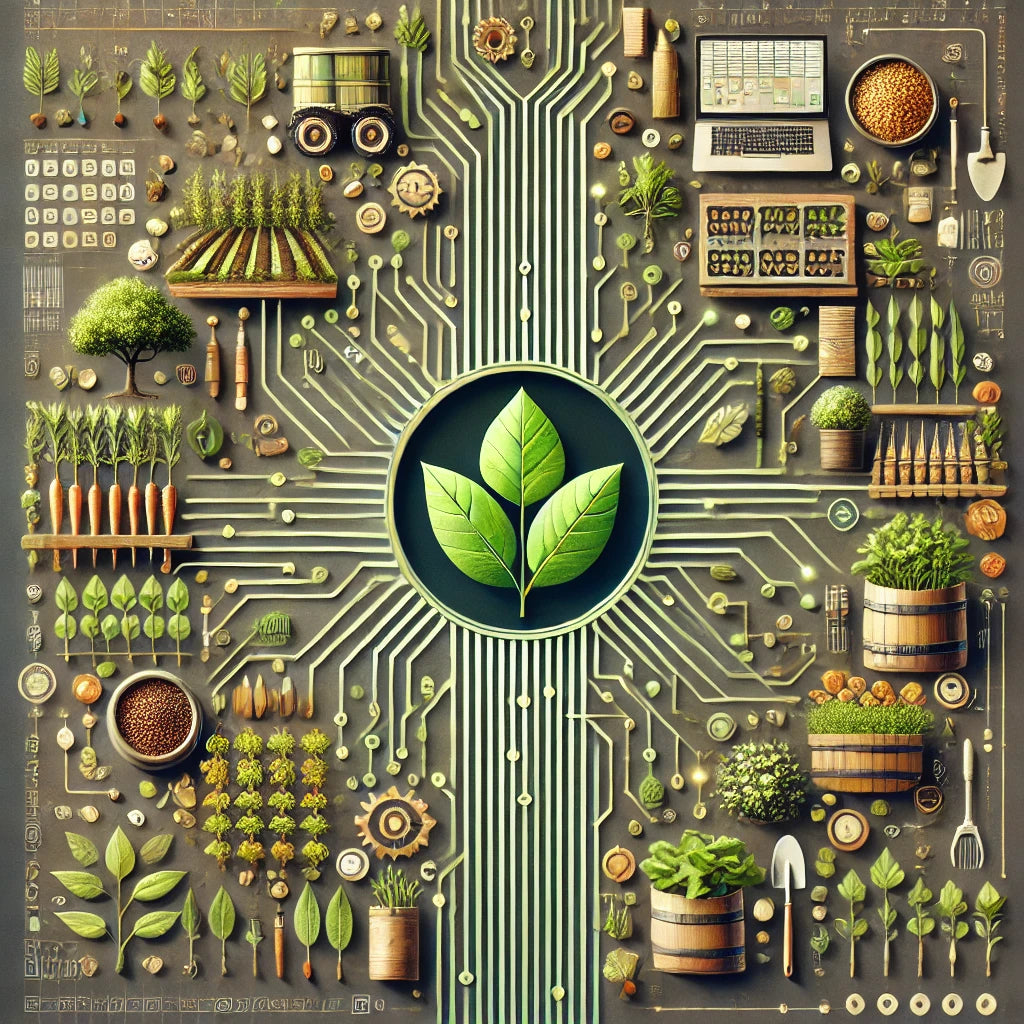Farming for a Better Future
Sustainability and regenerative farming are more than just buzzwords—they are essential practices for maintaining soil health, conserving resources, and ensuring long-term agricultural productivity. For urban farmers and homesteaders in Texas, adopting these practices can transform small plots into thriving ecosystems that benefit the community and the planet.
This section provides an in-depth look at sustainable and regenerative farming practices, offering actionable steps to enhance your soil, reduce waste, and create a resilient urban farming system.
10.1 Core Principles of Regenerative Farming
Regenerative farming focuses on restoring and enhancing the natural systems that support agriculture.
Key Principles:
-
Soil Health:
- Build organic matter through composting and cover crops.
- Avoid tilling to preserve soil structure and microbial life.
-
Biodiversity:
- Plant a mix of crops and native plants to support pollinators and beneficial insects.
- Incorporate perennials like fruit trees and herbs to create a layered ecosystem.
-
Water Conservation:
- Use drip irrigation and mulch to retain soil moisture.
- Harvest rainwater for irrigation during dry seasons.
-
Closed-Loop Systems:
- Reuse waste as resources, such as turning kitchen scraps into compost.
- Integrate livestock or chickens to cycle nutrients naturally.
10.2 Soil Health Management
Healthy soil is the foundation of sustainable farming. Here’s how to improve and maintain it:
Composting
- What to Include: Vegetable scraps, coffee grounds, eggshells, and yard waste.
-
Best Practices:
- Balance “greens” (nitrogen-rich materials) and “browns” (carbon-rich materials).
- Keep the pile moist but not soggy and turn it weekly for aeration.
Cover Cropping
- Purpose: Protect soil from erosion, add organic matter, and suppress weeds.
- Examples: Clover, rye, and buckwheat.
No-Till Farming
-
Benefits:
- Reduces soil erosion and compaction.
- Retains soil moisture and organic matter.
-
How to Start:
- Use a thick layer of mulch or plant a cover crop to suppress weeds.
10.3 Water Conservation Techniques
In a state like Texas, where drought is a constant challenge, water conservation is crucial.
Drip Irrigation
- Delivers water directly to plant roots, minimizing waste.
- Use timers to automate watering and ensure consistency.
Rainwater Harvesting
- Collect rainwater in barrels or cisterns to reduce dependence on municipal water supplies.
- Check local regulations to ensure compliance.
Mulching
- Apply organic mulch around plants to retain moisture, regulate soil temperature, and suppress weeds.
- Examples: Wood chips, straw, and grass clippings.
10.4 Biodiversity and Companion Planting
Diversity in your garden creates a resilient ecosystem that can withstand pests and diseases.
Companion Planting
-
Examples:
- Plant basil near tomatoes to repel pests.
- Use marigolds to deter nematodes and aphids.
Pollinator-Friendly Plants
- Include native flowers like black-eyed Susan and milkweed to attract bees, butterflies, and other pollinators.
Crop Rotation
- Rotate crops annually to prevent soil nutrient depletion and reduce pest buildup.
- Example: Alternate legumes like beans with nitrogen-hungry crops like corn.
10.5 Urban-Friendly Sustainable Practices
Small-scale urban farming requires creative solutions to maximize productivity.
Vertical Gardening
- Grow crops like cucumbers, peas, and herbs on trellises or vertical towers.
Hydroponics and Aquaponics
- Use soilless systems to grow plants with minimal water.
- Incorporate fish in aquaponic systems to create a nutrient cycle.
Community Composting
- Collaborate with neighbors or community gardens to manage organic waste collectively.
10.6 Resources for Sustainable Farming
Books and Guides
-
The Gardener’s Art of War by Jefferson Braga
- Practical insights for sustainable and strategic farming.
-
Teaming with Microbes by Jeff Lowenfels
- A deep dive into the role of soil microbiology in healthy gardens.
Organizations
- Rodale Institute: Leaders in regenerative organic farming research.
- Texas A&M AgriLife Extension: Offers workshops and resources on sustainable agriculture.
10.7 Success Stories in Sustainable Farming
Braga Farms DFW
- Location: Irving, TX
-
Practices:
- Integrates cover crops, composting, and pollinator habitats.
- Uses drip irrigation and rainwater harvesting to conserve water.
- Impact: Increased yield and community engagement through sustainable practices.
Dallas Urban Food Forest Initiative
- Focus: Turning unused urban spaces into thriving food forests with fruit and nut trees.
- Impact: Reduced food deserts and improved biodiversity.
10.8 Challenges and How to Overcome Them
Challenge: Limited Space
- Solution: Use vertical gardening and container systems to maximize small spaces.
Challenge: Pest Management
- Solution: Incorporate integrated pest management (IPM) techniques, such as introducing beneficial insects.
Challenge: Drought
- Solution: Invest in water-saving technologies like drip irrigation and rainwater harvesting.
10.9 The Future of Regenerative Farming in Texas
Emerging Trends:
- Carbon Sequestration in Soils: Practices like no-till farming and cover cropping are gaining attention for their ability to store carbon and combat climate change.
- Agroforestry: Combining trees with crops and livestock to create multifunctional landscapes.
- Tech-Integrated Farming: Smart sensors and AI-driven systems for precision farming.
Conclusion: Farming with Purpose
Adopting sustainable and regenerative practices is not only good for the planet but also essential for long-term farming success. By focusing on soil health, water conservation, and biodiversity, growers can create resilient systems that nourish their communities and the environment.

